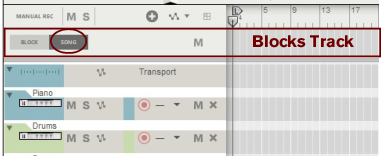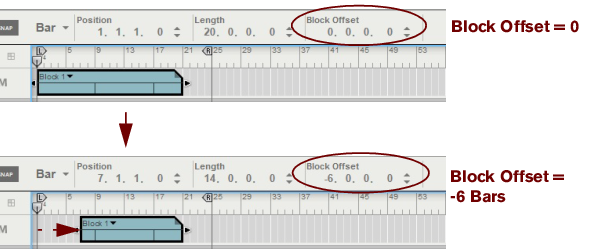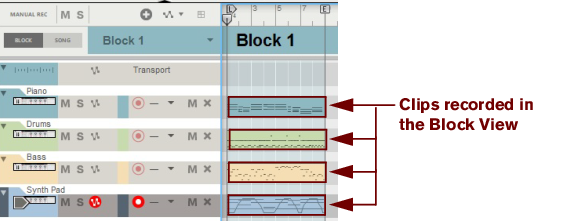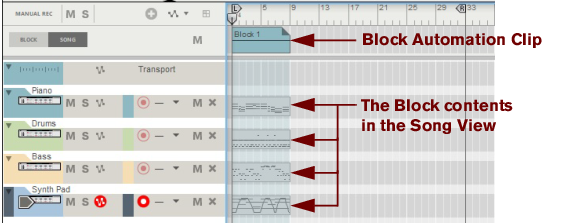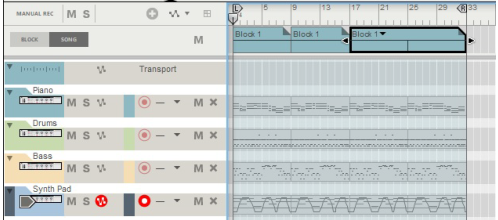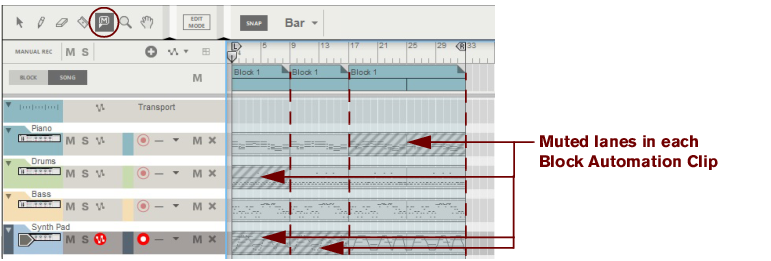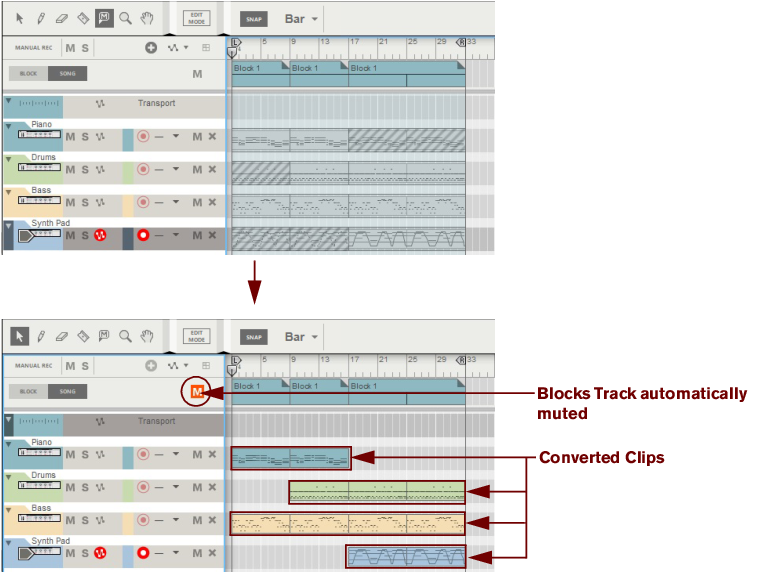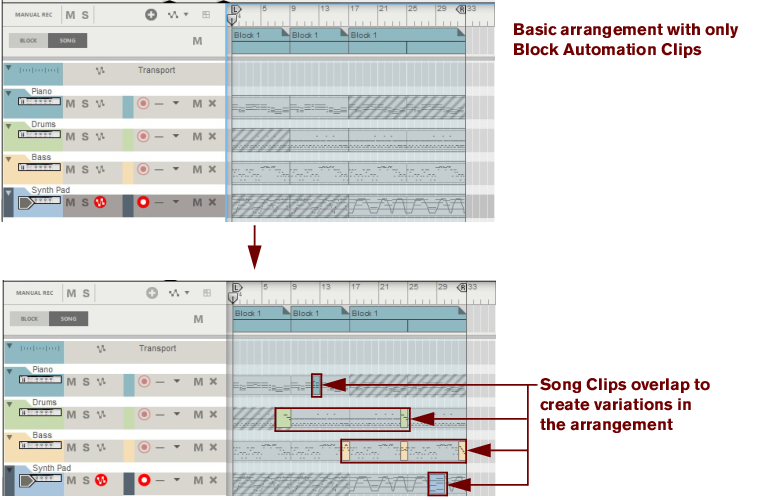The following section describes functions and routines that are specific to Block Automation Clips. General clip handling procedures (e.g. naming, coloring etc.) are described in the general “Clip handling” section.
The contents (clips and events) of Block 1 are displayed on the respective sequencer tracks in a ghosted fashion on a colored background. This way you will see what events and/or recordings the Block will play back. This also allows for muting of individual lanes in the Block (see “Muting lanes in Block Automation Clips”).
